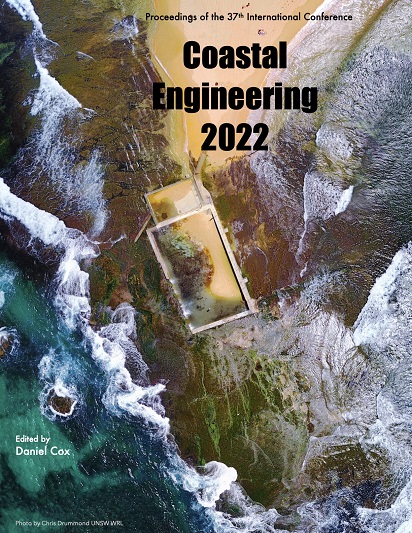Abstract
Dune erosion due to storms is primarily predicted by the use of empirical relationships, for example, when the duneface slope exceeds a certain threshold sand is eroded (SBeach, XBeach); or as a function of wave impact (Larson et al., 2004). However, geotechnical properties also play a role in dune scarp formation. Dry sand is relatively unstable, but as water is added, the tensile strength increases, enabling a vertical duneface to form and reduce slumping. The strength and stability of the sand matrix increases up to 10-15 percent with increasing water content, and then decreases as the sand matrix becomes saturated and more easily eroded. Hence, it is somewhat surprising that the importance of water infiltration into the dune sand matrix and resulting porewater content have received relatively limited attention within the coastal engineering literature to-date. This paper presents new results from a series of controlled laboratory experiments to observe moisture content and pore pressures within an eroding dune, to better understand the importance of wave run-up infiltration to dune erosion under wave attack.References
Erikson, Larson, and Hanson (2007): Laboratory investigation of beach scarp and dune recession due to notching and subsequent failure, Marine Geology, vol. 245, pp. 1-19
Larson, Erikson, and Hanson (2004): An analytical model to predict dune erosion due to wave impact, Coastal Engineering, vol. 51, pp. 675-696,
Palmsten and Holman (2011): Infiltration and instability in dune erosion, Journal of Geophysical Research: Oceans, vol. 116, no. C10

This work is licensed under a Creative Commons Attribution 4.0 International License.
Copyright (c) 2023 Stefano Conti, Kristen D Splinter, Emily Booth, Dominique Djaidiguna, Ian L Turner

